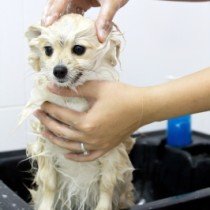Owning a puppy is one of life’s little pleasures. However, the reality of having a puppy is far different from what mass media would tell you, as every sweet moment of cuddles and puppy kisses is matched by a difficult time of cleaning after the puppy and fearing for its well-being. Your head is probably filled with a lot of fantasies of adorable fun-filled moments playing fetch at the park and taking long walks around the neighborhood.
In reality, you might be in for a lot more than you signed up for. From the countless hours you have to spend house training to having to clean up after your pooch’s mess, one thing’s for sure—owning a pup is a lot of work.
So many people want to have a cute little puppy as a companion. But, if you are thinking of bringing one of these fur balls home, think carefully about the decision you are making for both of your sakes. Once you’ve decided to add a puppy to the family, you’ve committed to caring for it and making thoughtful choices about its life.
Thankfully, there are a few tips and tricks you can learn to make the whole experience more comfortable. Knowing in advance what to expect and what you can do in those situations will save you from a lot of stress, and will make you a responsible pet owner.
Contents
- New Puppy Checklist
- Preparing to Be a Dog Owner
- Committing to Dog Ownership
- Getting Ready to Bring Your Dog Home
- Choose a Veterinarian
- Caring for Your Puppy
- 1. Schedule Vaccinations
- 2. Start Potty Training
- 3. Feed Your Puppy Quality Food
- 4. Schedule Regular Visits to the Vet
- 5. Exercise Your Puppy Regularly
- Risks and Infections
- Puppy Vaccination Schedule
New Puppy Checklist
Food
Put yourself in your dog’s position. How would you feel about not having the right nutrition? It would be torturous. So, the first thing on your checklist should actually be what you’re going to feed your puppy. However, when it comes to feeding dogs, you have to be extremely careful with the portions.
The misconception is that all dogs eat 3–4 times in a day, but that’s only for young pups. When they are 6 to 12 months, you can cut back the portions to two feedings a day.
Furthermore, you also need to figure out what food your new pup is currently eating. The vast majority of dogs will eat just about anything you bring to the table but, as a caveat, you should avoid switching their food instantaneously. Instead, continue feeding him what he has been having and then gradually introduce other diets with time.
Bed
This may sound like a lot—especially if you’re just fine with sharing your bed with your furry friend—but a bed is without a doubt an important purchase. However, puppies are generally quite the little chompers and can rip apart the bed in the process. Thus, when buying a bed, you should first determine that it is indestructible and made with a dog’s nature in mind. You should also ensure that the bed’s internal material is sturdy enough just in case your pooch decides to dig a hole in the bed.
Collar
A collar is an essential safety precaution that gets you reunited with your pooch if he ever gets lost. Keep in mind though that puppies grow extremely fast and it is important to adjust the size of the collar now and then.
A Bristle Brush
Playing and rolling over on the carpet and couch, training all day, and negligence will often leave your furry friend’s fur tangled and matted. If you want your pooch’s hair to look well-groomed and shiny, you will need to brush his coat regularly.However, different dogs have different types of coat, meaning that it is very important to find out which brush works best for your dog.
A Dog Nail Trimmer
Nail trimming is a critical part of grooming your dog. So, to ensure that his nails don’t crack or get too long, you will have to trim his nails regularly.
Preparing to Be a Dog Owner
Recognize the Commitment
Before finally bringing your furry friend home, recognize the responsibility that he brings. Are you ready for the financial implication having a pup will have on your finances? Are you emotionally vested in owning a puppy? And, the most important question: Are you ready for the time commitments that this adorable little chunk of joy requires?
Evaluate Your Lifestyle
Keep in mind that dogs are dynamos. This goes for any dog and most especially puppies. So, you’ll need to think of the type of dog that will best suit your hobbies, personality, and activities before you decide on a breed.
Choose a Breed
Thorough preparation and research are the keys to success when scouting for a suitable puppy.
Ask Questions
The idea behind asking questions is to get to know more about puppies and more specifically the puppy that you want to take home. Here are some common pre-adoption questions that you need to ask:
- Has the puppy been adopted before?
- Does the puppy have any pre-existing health conditions?
- Is the pup housebroken?
- What are the breed’s practices?
Committing to Dog Ownership
Get It in Writing
When adopting or buying a puppy, owners have to ensure that all details pertaining to the sale or adoption are put down in writing. It should be noted that you paid this much, there are terms of co-ownership, and that there are certain health guarantees you should expect. The contract should also include instructions on what to do if things just don’t work out with your furry friend.
Get Your Papers
Now that you have the adoption or sale in writing, it’s time to get the papers. With this, we are talking about the AKC registration application that your breeder should fill out and sign.
Register Your Dog
In addition to getting the papers, you need to send your completed application to the AKC so that your pup can become part of the nation’s largest registry and have an opportunity to participate in performance events.
Getting Ready to Bring Your Dog Home
Make a Schedule
When your pooch finally gets home, the number of things you have to do can be overwhelming. To make it easier for you and your household, it helps to come up with a schedule stating who is responsible for food, walks, water, clean-up, exercise, and grooming.
Dog-proof Your House
Puppies are very much like babies. They are curious and energetic and pretty much want to be in things that they shouldn’t. So, when you are dog proofing, you have to be thorough.
Puppy-proofing Tips for the House
- Doors and windows should stay closed at all times so that the pup can’t escape.
- You should keep all sharp objects out of reach.
- Being that puppies like to chew on electrical cords, they should be kept out of sight or strung through cord concealers.
- Keep toilet lids closed so that your pooch doesn’t fall or drink water out of the toilet.
- Keep medications out of reach.
- Store small objects away so that your pup doesn’t accidentally eat them.
- Keep cleaning supplies out of reach so that your pooch doesn’t get affected by the chemicals in the vapors given off.
- Keep your expensive jewelry out of reach so that your puppy doesn’t chew on them.
Puppy-proofing Tips for the Outdoors
- Take good care of the lawn so that ticks don’t hide in the neglected grass and latch on your furry friend.
- Clean up after your pooch to ensure that he doesn’t try to eat his own poop later.
- Make sure there’s enough shade in the yard.
- Fence in your backyard with a high wall so that your little pooch doesn’t try to make a run for it while playing outside.
- Put up a fence surrounding the pool so that your puppy doesn’t accidentally fall in.
- Set aside a portion in the yard where he can relieve himself.
Choose a Veterinarian
Like humans, dogs are also susceptible to getting sick, so you’ll need to schedule regular checkups with the veterinarian. Now, when it comes to the veterinarian, there are two ways to go about your visits: selecting a veterinarian ahead of time or doing a walk-in visit with basically any veterinarian that’s available. However, picking one vet and settling on him or her makes it easier to schedule up checkups.
Caring for Your Puppy
He’s finally home, and you’re more than thrilled. But, more than a privilege, owning this lovely creature also means added responsibility on your part. He’s depending on you for food, shelter and pretty much everything that concerns his well-being and so you have to learn everything you can about caring for him.
1. Schedule Vaccinations
Much like babies, young pups don’t have a fully functional immune system yet and are, therefore, susceptible to diseases. The secret to ensuring that they don’t get sick is to schedule vaccinations and boosters over several months throughout the year.
2. Start Potty Training
Puppies can be quite the messy fur balls. And, if you don’t properly train them early in advance, you may be in for a lot of messy cleanups. As part of your puppy care routine, potty training is an absolute must. In fact, it should start as soon as your pooch gets home.
3. Feed Your Puppy Quality Food
Put yourself in your puppy’s shoes. Would you like to be fed water and vegetables when your nutritional needs are much more?
I presume not.
Nutrition is a huge part of caring for your puppy. And as it is growing, it is important to ensure that you feed your pooch puppy food that has been specifically formulated for a growing dog. Furthermore, you also need to ensure that you are feeding your pup the correct portions. It is strongly recommended that younger puppies have at least 3–4 meals in a day whereas larger dogs take two meals on a given day.
4. Schedule Regular Visits to the Vet
While the benefits of dog ownership far outweigh the downsides, a dog also comes with the added financial responsibility of having to visit the vet every so often. However, that doesn’t mean that you skimp on your pet. It might sound like a lot, but most canines hardly exhibit any symptoms of illness. Well, at least not until it’s too late.
So, to ensure that your pooch is in perfect condition, you need to ensure that you visit the vet regularly so that any pre-existing condition can be diagnosed and treated promptly.
5. Exercise Your Puppy Regularly
Puppies are generally very energetic and agile and often require regular exercises including walks around the yard or playing fetch. However, keep in mind that puppies are small and sometimes not as strong, so you need to keep the exercises short.
Now that you have all this information, you’ll have an easier time taking care of your pup.
Risks and Infections
Hopefully, if you learn and internalize all of the tips and recommendations that are given on how to treat your puppy, you will be able to avoid all of the infections that threaten it. While proper care doesn’t require you to become an amateur veterinarian, it is good to know some of the major infections and diseases that attack canines, as to be able to inform your vet as soon as possible.
Here is an overview of some dangerous diseases that vaccinations help your pet avoid:
Canine Distemper
Canine distemper is an extremely serious disease that causes widespread infection in the host. It can either be spread through airborne exposure, direct contact with an infected animal or through the placenta.
Symptoms of Canine Distemper
When suffering from canine distemper, infected dogs may experience:
Stage One
- Fever
- Coughing
- Diarrhea
- Clear nasal discharge
- Purulent eye discharge
- Vomiting
- Pustular dermatitis
Stage Two
- Circling
- Death
- Seizures
- Muscle twitching
- Head tilt
- Partial or full paralysis
- Nystagmus
- Convulsions
Preventing Canine Distemper
- Keep your pup away from infected animals.
- Vaccinate your pet for distemper.
Kennel Cough
A kennel cough, also known as canine infectious tracheobronchitis, is a common respiratory disease caused by viral, bacterial, and other infections. Dogs contract it through airborne droplets, contaminated surfaces or direct contact with infected puppies.
Symptoms of Kennel Cough
When suffering from a kennel cough, infected dogs may experience:
- Sneezing
- Low fever
- A runny nose
- Loss of appetite
- Lethargy
Lyme Disease
The Lyme disease is an infectious tick-borne illness that is transmitted to dogs by certain species of ticks.
Symptoms of Lyme Disease
When suffering from Lyme disease, infected dogs may experience:
- Lameness
- Swelling of joints
- Fever
- Stiffness
- Loss of appetite
- Reduced energy
Treatment of Lyme Disease
- Administration of antibiotics
Preventing Lyme Disease
- Inspect you pooch daily especially after walks
- Schedule a regular tick checkup with your vet
- Vaccination
- Trim your lawn often
Parvovirus
Parvo is a deadly virus that attacks the gastrointestinal system. It is also highly contagious and is spread from one puppy to the next through direct contact with an infected dog or through its fecal matter.
Symptoms of Parvovirus
When suffering from parvovirus, infected dogs may experience:
- Depression
- Lethargy
- Dehydration
- Severe diarrhea
- Fever
- Weakness
- Anorexia
- Dehydration
Treating Parvovirus
Parvo is a deadly disease that can be fatal if not treated promptly. Therefore, common treatments include:
- Antibiotics
- Supportive fluids
Leptospirosis
Leptospirosis is a zoonotic disease that is caused by bacteria. It is spread through contact with urine from infected animals or contact with contaminated water in puddles.
Symptoms of Leptospirosis
When suffering from leptospirosis, infected dogs may experience:
- Poor appetite
- Vomiting
- Lethargy
- Increased thirst
- Jaundice
- Infertility
- Kidney failure
Rabies
Sound familiar?
Well, rabies is actually quite common among dogs. And it’s also every dog owner’s nightmare. This viral disease is often transmitted through the bite of a rabid animal, and it can be deadly if not treated within hours of infection.
Symptoms of Rabies
When suffering from rabies, infected dogs may experience:
- Anxiety
- Paralysis
- A headache
- Hallucinations
- Excessive drooling
Heartworm
Spring is just around the corner, which means warmer days and more bugs including the deadly heartworm parasite. And, although there’s really no vaccine for heartworm, it is preventable using regular medication.
So, what is heartworm?
As the name suggests, heartworm is a potentially deadly parasite where heartworms lodge in the right side of the heart and sometimes even the liver and kidney, sand block and injure the internal organs of the dog.
Symptoms of Heartworm
When suffering from heartworm, infected dogs may experience:
- Lethargy
- A cough
- Difficulty breathing
- Loss of appetite
Puppy Vaccination Schedule
Many puppy vaccination schedules are pretty much the same, but factors such as your puppy’s individual risk factors and country of residence may have an impact on the overall plan. That said, here is a generally accepted guideline for vaccination.
| Puppy’s Age | Recommended Vaccinations | Optional Vaccinations |
|---|---|---|
| 6–8 weeks | Measles, Distemper, and Parainfluenza | Bordetella |
| 10–12 weeks | DHPP(vaccines for distemper, hepatitis, parvovirus, and parainfluenza) | Bordetella, Coronavirus, Lyme Disease and Leptospirosis |
| 12–24 weeks | Rabies | |
| 14–16 weeks | DHPP | Lyme Disease, Coronavirus and Leptospirosis |
| 12–16 months | DHPP, Rabies | Leptospirosis, Lyme Disease, Coronavirus, and Bordetella |
| Every 1–2years | DHPP | Leptospirosis, Lyme Disease, Coronavirus, and Bordetella |
| Every 1–3years | Rabies |
I grew up in a household that was filled with animals. I believe that my fate as a dog-loving person was sealed in early childhood since my parents owned several dogs of varying sizes and breeds. There was no choice but to take care of and learn about dog habits and the best animal care practices — otherwise, I’d be clueless about how to go about the creatures I was surrounded by day and night.
As a life-long puppy lover, I know a thing or two about dogs and how to go about caring for them in the best way possible. Although I’m not a professionally trained dog behaviorist, trainer, or veterinarian, all of my knowledge and experience with canines comes from a place of love and a deep-rooted passion for dogs and animals in general.
Seeing as dogs kept me company throughout every stage of my life, I decided to follow a different path in my academic life and obtained a Bachelor’s and Master’s degrees in Marketing Management and Digital Advertising, which ultimately allowed me to combine my professional training and personal experience by creating the ultimate dog lover’s resource website! Along with my husband, Dave, I run MySweetPuppy for like-minded dog lovers who want to have a single, clear, and reliable information source about anything and everything related to dogs and their well-being.





![[HOW TO] Get Rid Of Puppy Worms Today](https://mysweetpuppy.net/wp-content/uploads/2020/09/How-much-should-I-feed-my-8-week-old-lab-puppy.jpg)

